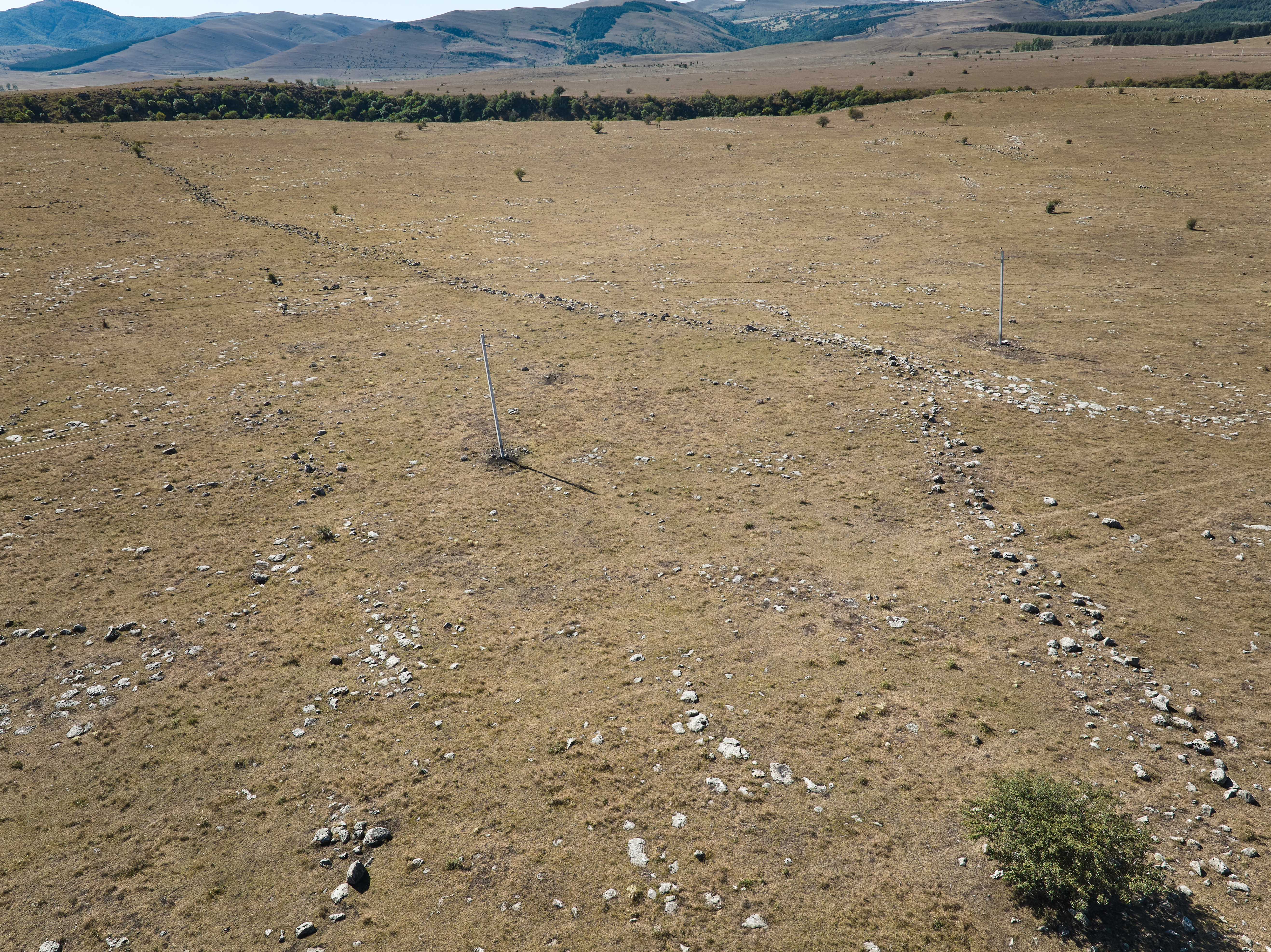An enormous Bronze-Age “mega fortress” has been revealed in the Caucasus mountains, leaving researchers puzzled as to the function that this colossal prehistoric structure played on the crossroads between Europe and Asia. Known as Dmanisis Gora, the huge fortified settlement dwarfs all other nearby fortresses, yet contains precious few clues as to who occupied it.
Dated to around 3,000 years ago, Dmanisis Gora is one of many fortress settlements that appeared in the South Caucasus between the second and first millennia BCE. Following initial excavations at the site in Georgia in 2018, archaeologists were surprised when they returned the following year to find the remains of a second set of fortification walls surrounding the inner fortress, thus massively expanding the size of the settlement.
Too big to be appreciated from the ground, Dmanisis Gora could only be fully revealed using drone photography. Overall, researchers took 11,000 aerial pictures of the site, which they then stitched together to produce a complete image of the fortress.
“The results of this survey showed that the site was more than 40 times larger than originally thought, including a large outer settlement defended by a 1-kilometer-long [0.6-mile] fortification wall,” explained study author Dr Nathaniel Erb-Satullo in a statement. “These datasets enabled us to identify subtle topographic features and create accurate maps of all the fortification walls, graves, field systems, and other stone structures within the outer settlement.”
According to the researchers, the inner and outer fortification walls were “mutually dependent with respect to defence,” meaning they functioned as one system of protective barriers and neither wall could be considered impenetrable without the other. They were also both constructed in the same style, using rough boulders assembled without the use of mortar into walls roughly 2 meters (6.6 feet) thick.

A photo showing the outer fortification wall, with power lines for scale.
Image credit: Nathaniel Erb-Satullo
These findings suggest that the two fortifications were built at the same time, which means that the inner and outer settlements existed as part of one massive site. “If the occupation of the inner fortress and outer settlement were roughly contemporary, as we suggest, this settlement would be one of the largest known in the South Caucasus Late Bronze and Iron Age,” write the study authors.
Puzzlingly, however, the large outer settlement contains hardly any archaeological artifacts, suggesting that it either wasn’t inhabited by many people or was abandoned shortly after it was established. Both scenarios seem strange, given the amount of effort that went into building the fortified walls.
Offering a possible explanation, researchers suggest that the fortress may have been used seasonally, potentially as a staging ground by pastoralists during the spring and autumn. Such a hypothesis would appear to justify the importance placed on this key site despite the fact that it lacked a large permanent population.
For now, however, the exact reason for the site’s construction remains something of a mystery, although Erb-Satullo says that “further study will start to provide insights into areas such as population density and intensity, livestock movements and agricultural practices, among others.”
The study is published in the journal Antiquity.
Source Link: 3,000-Year-Old Mountain “Mega Fortress” With Mysterious Function Perplexes Archaeologists